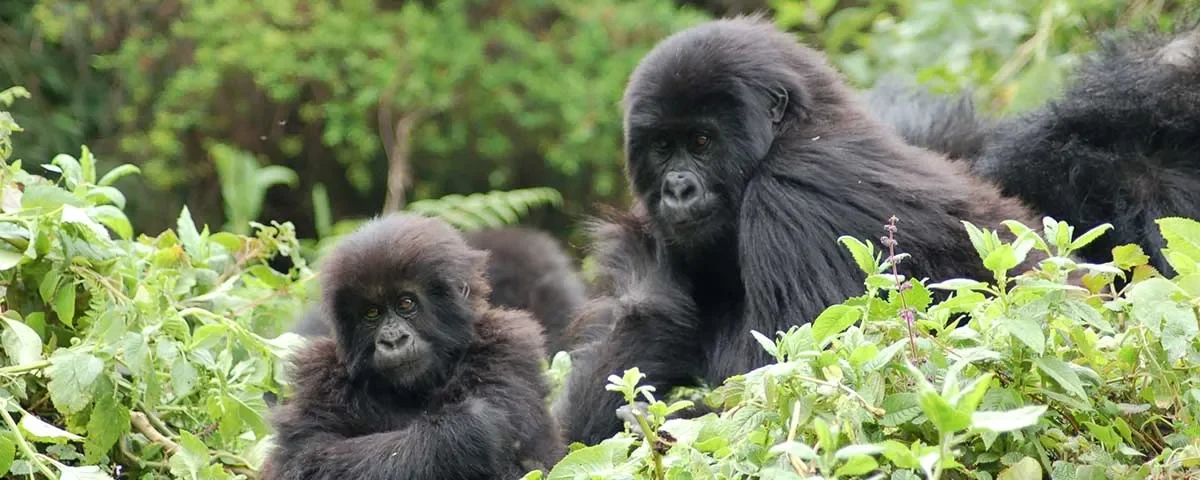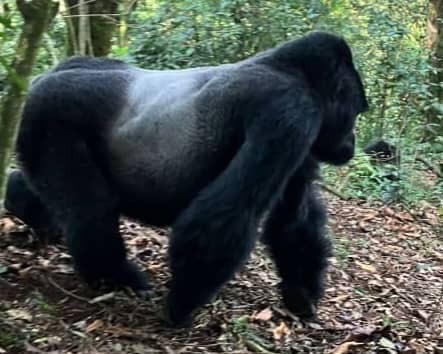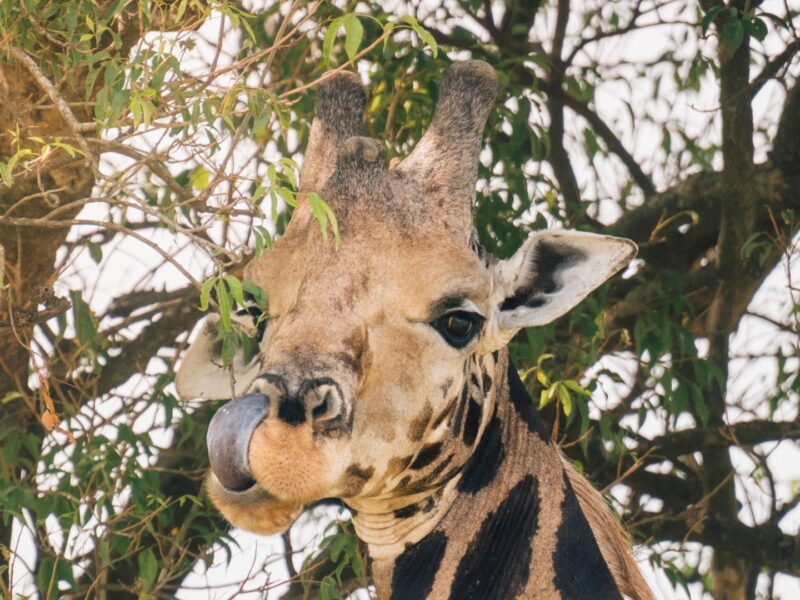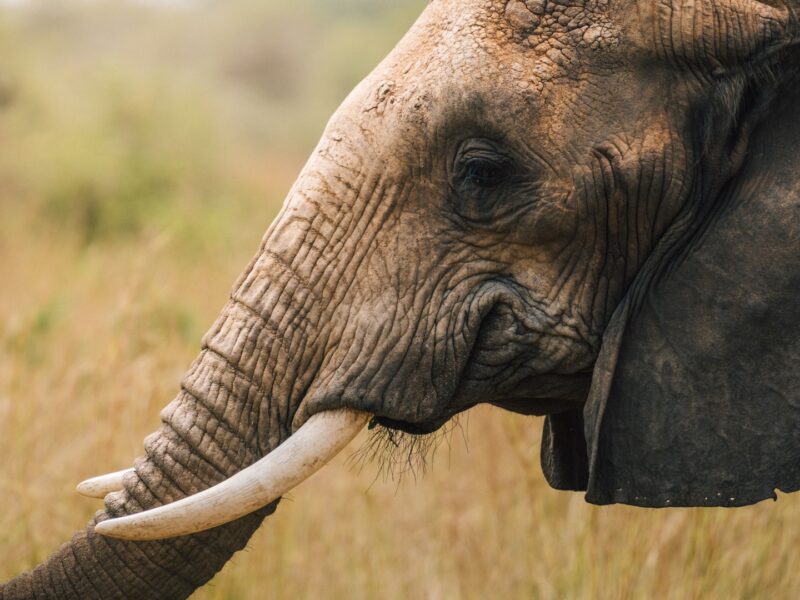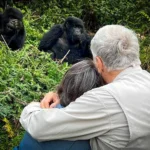
Senior Gorilla Trekking in Bwindi: A complete Guide for Older Travelers
July 14, 2025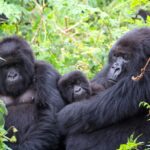
Gorilla Trekking Honeymoon in Bwindi: Wild Romance with Ngeye Tours & Travel
July 14, 2025Family Gorilla Safari in Bwindi Impenetrable Forest Uganda
By Ngeye Tours & Travel
Is Uganda Gorilla Trekking a Family-Friendly Adventure?
One of the most common questions families ask when planning a trip to Uganda is: “Is it possible to do gorilla trekking with my children?” and “What age is allowed for gorilla trekking in Bwindi Impenetrable Forest?”
The idea of a Uganda gorilla safari as a family adventure is deeply appealing. Watching your children experience the thrill of seeing mountain gorillas in the misty jungles of Bwindi can sound magical. But the reality, shaped by conservation laws and practical trekking conditions, is more complex.
The Uganda Wildlife Authority (UWA) has set a minimum age of 15 years for gorilla trekking in Bwindi Impenetrable National Park. This policy ensures safety for children and minimizes disturbances to gorillas—protecting both the wildlife and young trekkers. The terrain in Bwindi is famously rugged: thick vines, steep inclines, and muddy trails that can challenge even experienced adults. For these reasons, children under 15 are not permitted to join gorilla trekking safaris.
Does this mean families with younger children can’t enjoy a safari in Bwindi? Absolutely not. While kids under 15 can’t trek, they can still discover the magic of the forest and Uganda’s cultural heritage. With careful planning, families can blend gorilla trekking for adults and older teens with cultural walks, cultural experiences, nature trails, and other activities suited for younger children. The result? A rich, multi-generational family journey that celebrates Uganda’s natural and cultural treasures.
Why Is There a Minimum Age for Gorilla Trekking in Bwindi Impenetrable Forest?
Families often ask: “Why can’t younger children join us for gorilla trekking safaris in Bwindi Impenetrable Forest?” The answer lies in both conservation ethics and practical safety.
Gorillas are wild, critically endangered animals, and close human contact carries risks for both humans and gorillas. Children, naturally curious and energetic, may find it challenging to remain quiet and calm when meeting gorillas—essential for minimizing stress to these gentle giants. A sudden movement, loud voice, or unexpected approach could frighten gorillas or provoke defensive behavior from a silverback.
Additionally, the physical demands of gorilla trekking in Bwindi cannot be underestimated. Trails often involve several hours of hiking through dense undergrowth, slippery slopes, and steep ridges. Even fit adults describe the trek as moderately to very challenging, depending on the day’s route and weather conditions.
The Uganda Wildlife Authority’s minimum age policy (15 years and above) ensures that only trekkers mature enough to understand instructions, handle the terrain, and respect gorillas’ space participate. It’s a regulation grounded in decades of conservation practice—preserving the health and safety of both visitors and the gorillas.
Although it may disappoint some families initially, understanding these reasons often deepens travelers’ respect for Uganda gorilla tours. Instead of seeing it as a barrier, many families discover it as an opportunity: while older members trek, younger ones can explore cultural walks, village tours, and educational programs, ensuring everyone experiences the magic of Bwindi Impenetrable National Park.
What Safari Activities Can Families Combine with Gorilla Trekking in Bwindi?
Parents frequently ask: “If only adults and older teens can trek, what can younger children do during our Uganda gorilla safari?” Fortunately, Uganda offers a rich tapestry of activities that turn a family safari into a journey of shared discovery.
Cultural walks around Bwindi are among the most family-friendly experiences. Guided by local Batwa or Bakiga community members, these walks introduce families to ancient forest wisdom, traditional farming practices, music, dance, and crafts. Children often delight in hands-on activities—like drumming lessons, craft making, or learning to use a bow and arrow.
For nature-loving families, gentle forest trails like the Munyaga River Trail offer a manageable introduction to Bwindi’s biodiversity. These shorter walks, often under two hours, wind through lush ferns, butterflies, and small waterfalls—accessible to children and grandparents alike.
Families can also visit local tea plantations, honey cooperatives, or community schools—each offering a window into daily life in rural Uganda. Many lodges near Bwindi Impenetrable Forest provide family programs, from birdwatching walks to storytelling evenings by the fire.
Beyond Bwindi, consider adding chimpanzee tracking in Kibale Forest (also for ages 12+), wildlife safaris in Queen Elizabeth National Park, or a peaceful canoe ride on Lake Bunyonyi. The combination of wildlife, culture, and scenery creates what many describe as the best gorilla trekking safari: a journey rich in variety, meaning, and shared memories.
Are There Family Lodges and Child-Friendly Facilities in Bwindi?
Another important question from parents is: “Are there family-friendly lodges in Bwindi Impenetrable Forest?” The answer is yes—and this makes planning a family gorilla safari easier and more comfortable.
In Buhoma, Ruhija, Rushaga, and Nkuringo sectors of Bwindi Impenetrable National Park, several lodges cater specifically to families. These lodges offer spacious family cottages, interconnecting rooms, and facilities like child menus, play areas, and babysitting services—helpful when adults are out trekking.
Some lodges organize cultural experiences right at the property: Batwa dance performances, storytelling circles, or craft workshops that keep children engaged. For older kids, guided nature walks near the lodge reveal monkeys, colorful butterflies, and birds without the physical demands of a full trek.
At Ngeye Tours & Travel, we work closely with family-friendly lodges to customize meal times, arrange kid-friendly activities, and ensure safety and comfort for guests of all ages. The aim is to create a relaxed atmosphere where parents can enjoy the trek knowing their children are happily and safely occupied.
Many parents describe these moments—children learning local dances, crafting necklaces, or watching sunsets over misty ridges—as some of the most memorable of their trip. It shows that a Uganda gorilla safari can truly be a multi-generational adventure.
What Makes Uganda Gorilla Tours Special for Families?
Parents often wonder: “Why choose Uganda over other Africa gorilla trekking destinations for a family trip?” Uganda offers a unique blend of wildlife, culture, and gentle adventure that suits families exceptionally well.
First, Uganda’s diversity is unmatched. Beyond gorillas, families can explore chimpanzees, tree-climbing lions, colorful birdlife, and stunning crater lakes—making it easy to create a balanced itinerary for different ages.
Second, Ugandan hospitality stands out. Many families share stories of local guides, porters, and lodge staff going out of their way to make children feel welcome—teaching them local songs, sharing stories, or explaining nature’s secrets.
Third, Uganda’s commitment to community-based tourism means your family safari directly supports local schools, women’s groups, and conservation projects. Children learn firsthand how tourism can benefit people and protect wildlife—a living lesson in responsible travel.
Lastly, combining gorilla trekking with cultural walks, cultural experiences, and gentle nature activities creates what many families call the best gorilla trekking safari: not just a trek, but a shared story of wonder, learning, and connection.
How to Plan a Family Gorilla Safari with Children Under 15?
Families often ask: “If my children can’t trek, how do we still enjoy the magic of Bwindi together?” The key is thoughtful planning and balancing activities for every family member.
At Ngeye Tours & Travel, we often design itineraries where parents or older teens trek on one day, while younger children join child-friendly cultural walks or lodge-based activities. The next day, the whole family enjoys shared adventures: visiting the Batwa community, exploring village markets, or canoeing on nearby lakes.
Families can also split into smaller groups, ensuring everyone gets the right balance of activity and relaxation. Choosing lodges with comfortable family cottages makes regrouping in the evening for dinner or storytelling a joy.
Consider adding lighter days after trekking—visiting Lake Bunyonyi, exploring Queen Elizabeth National Park, or enjoying a quiet day at the lodge. This pacing keeps energy high and allows everyone to process the experiences together.
By weaving together wildlife, culture, and family time, your trip becomes more than a holiday: it becomes a Uganda gorilla safari that unites generations through shared discovery.
Is a Family Gorilla Safari in Uganda Worth It?
So, is it possible to trek with your children? For those 15 and older, yes—and it’s an experience they’ll never forget. For younger kids, while gorilla trekking itself isn’t allowed, the magic of Uganda is still very real: cultural experiences, gentle walks, crafts, music, and wildlife beyond the forest.
At Ngeye Tours & Travel, we believe the best Gorilla trekking safaris are those that bring families together—through stories, sights, and shared wonder. Whether your children are old enough to trek or not, Uganda welcomes families with open arms and endless opportunities for adventure.
Because sometimes, the greatest journeys aren’t just about where you go—but about discovering the world together.
By Ngeye Tours & Travel


